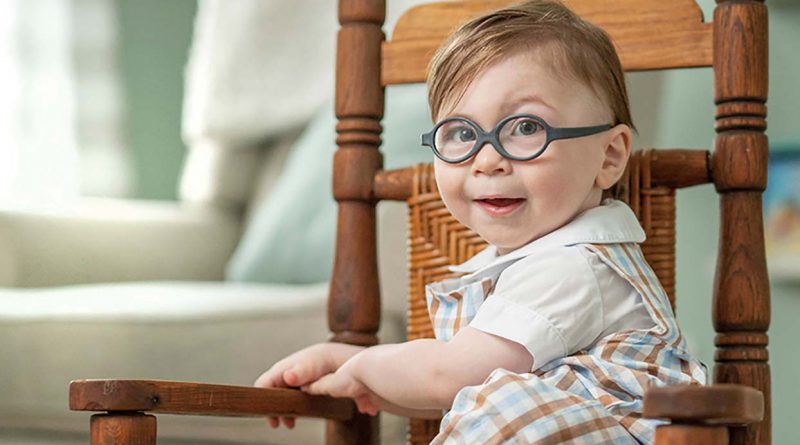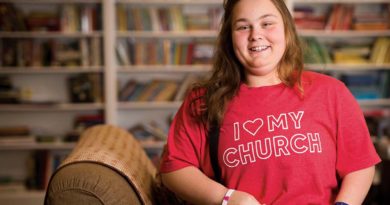Baby’s Breath
Published on June 10th, 2019 by Christina Echegaray.
Summer 2019
A few weeks before the due date of her first child, Katie Bertotti’s intuition told her something wasn’t right.
She hadn’t been experiencing much movement from her unborn son, Charlie, and decided it was worth a phone call to her nurse midwives.
The midwives encouraged her to come to the Emergency Department, where close monitoring showed decelerations in Charlie’s heart rate, spurring an emergency C-section delivery.
On Sept. 28, 2017, Charlie was born discolored, silent and not breathing.
The first few minutes of Charlie’s life were a blur, as a team of doctors and nurses at Vanderbilt University Medical Center (VUMC) worked to resuscitate him and stabilize his heart rate. He was then transferred to the Neonatal Intensive Care Unit (NICU) at Monroe Carell Jr. Children’s Hospital at Vanderbilt.
“I was keeping one eye on Katie’s vitals and one ear on the team of doctors and nurses who were trying to get Charlie breathing,” said Mike Bertotti, Katie’s husband and Charlie’s father.
A few hours passed before Katie and Mike had a diagnosis: Charlie had neonatal encephalopathy, a syndrome that occurs when a baby experiences reduced blood flow and oxygen to the brain near the time of birth. The longer a child’s brain spends without oxygen, the greater his chances of brain damage — and subsequent risk of death or neurologic disabilities, such as cerebral palsy, cognitive impairment and epilepsy — increase.
“The doctor came in and told us Charlie had a hypoxic ischemic event, and all we heard was ‘brain damage,’” said Katie, who at the time was still under the effects of anesthesia. “I wasn’t of a clear enough mind to understand what she was telling us or what that would mean. I was thinking, ‘Will he live? And, what will his quality of life be if he does?’”
Evolving care
Affecting up to 12,000 births each year in the United States, neonatal encephalopathy isn’t common, and not all children who receive the diagnosis suffer brain damage. The condition can have many underlying causes, including uterine rupture prior to birth, the placenta or umbilical cord delivering first, or a stroke suffered by the baby. In many other cases, the cause remains undetermined.
According to William Walsh, MD, professor of Pediatrics in the Mildred Stahlman Division of Neonatology at Children’s Hospital, the survival rate for babies with encephalopathy is around 90 percent, but babies who suffer brain damage have a roughly 50 percent chance of developing cerebral palsy.
“The loss of oxygen around birth is a really important and terrible problem. These are beautiful, healthy term babies who experience a catastrophic event,” said Walsh, former chief of Nurseries, who began his work in the field in 1976.
“As soon as you know you’re pregnant, you have the baby’s college education picked out and think about who they’re going to marry. You have their whole life imagined, and as you get closer to delivery, it becomes more real. You enter the third trimester and paint their room. And then something like this happens, and it’s like being in a car accident — that’s the kind of catastrophe this is for these families,” Walsh continued.

For the first 20 years of his career, Walsh and his colleagues had no way of treating babies with encephalopathy. The team could only treat resulting seizures and blood pressure conditions, increasing the baby’s chance of survival.
One study in animal models in the 1990s, however, showed an interesting observation: although animals with normal functioning brains that endured a hypoxic ischemic event lost brain function within 16 hours of the event, scans taken four hours after the event showed the brain was still functioning normally. This meant damage took time to develop.
“There was this period of time that we called the ‘window of opportunity,’” said Walsh. “Could we do something to keep the brain functioning before it ceased activity a few hours later? The first thing that was shown to have some success was decreasing the brain temperature.”
In 1999, Vanderbilt enrolled in one of the first international clinical trials to determine if cooling therapy — or cooling the baby’s brain down about five degrees — could prevent brain damage in babies born with oxygen deprivation. The results showed that babies who suffered moderate damage at birth experienced brain damage reductions of almost 60 percent after being cooled for 72 hours, and the child’s odds of developing cerebral palsy decreased from two in three to one in two.
While cooling therapy showed progress and was established as a standard of care in the early 2000s, it only helps one in seven babies with encephalopathy. So, when evidence emerged that a drug commonly used to help premature babies repopulate blood cells had neuroprotective and neuroregenerative capabilities, researchers jumped on the chance to test its effect on reducing brain damage.
A new approach
In May 2017 Vanderbilt joined a five-year, Phase III national clinical trial funded by the National Institute of Neurological Disorders and Stroke (NINDS) to determine if the drug — Erythropoietin (“Epo” for short) — improves neurodevelopmental outcomes when combined with cooling therapy.
The first two phases of the study tested the drug’s safety and optimal dose for term babies. The current phase, which involves 22 academic medical centers across the country and is sponsored by the National Institutes of Health (NIH), will enroll 500 patients and measure the drug’s efficacy based on developmental outcomes at 2 years of age.
The principal investigators of the national study are Yvonne Wu, MD, MPH, at the University of California, San Francisco, and Sandra Juul, MD, PhD, and Patrick Heagerty, PhD, at the University of Washington in Seattle.

Division of Neonatology, is Vanderbilt’s principal site investigator for a national study hoping to improve outcomes for infants who suffer oxygen deprivation. Photo by John Russell.
“This phase is hopefully the defining study to see if Epo can be used as a standard of care in addition to cooling therapy,” said Hendrik Weitkamp, MD, FAAP, director for Patient-Oriented Research in the Division of Neonatology and principal investigator for Vanderbilt’s portion of the study. “It’s nice to be able to offer something else to these families in addition to cooling, our standard care, that has been studied well. And, since we’ve been one of the sites involved in those studies, we already have a lot of experience with this group of babies.
“It’s comforting to know that participating in this clinical trial may make a difference in how we treat babies with encephalopathy in the future. I feel like it puts us at the forefront of medicine,” said Weitkamp.
Vanderbilt, which is the only trial site in Tennessee and one of two in the southeastern United States, has already enrolled 18 patients out of its target of 20.
To effectively measure Epo’s role, the trial, known as the HEAL (High-dose Erythropoietin for Asphyxia and Encephalopathy) Trial, is placebo-controlled, meaning only half of the babies enrolled receive the drug. The study is also double-blinded, meaning neither the families nor their doctors know whether the patient received Epo or the placebo.
To be eligible for the study, babies must be at least 36 weeks gestation at birth, suffer from moderate to severe encephalopathy and receive cooling therapy before they are six hours old. Once enrolled, each patient receives five injections of the drug or the placebo over seven days and is cooled for 72 hours following birth.
Although the baby may receive the placebo, the trial offers participating families an additional set of trained providers who work closely with the primary medical team to optimize the patient’s care.
What is cooling therapy?
For two decades pediatric neurologists and neonatologists in Vanderbilt’s Neonatal Intensive Care Unit (NICU) have researched brain cooling therapy as a treatment option for newborns who have suffered from oxygen deprivation and to understand what brain cooling therapy can achieve. Read more »
“In addition to supporting the clinical care of our patients, we can offer services such as close follow-up and special neurodevelopmental testing through this study that we wouldn’t be able to offer outside of this trial,” said Weitkamp.
“For a lot of parents, it is comforting to know that even if their child may or may not benefit from participating in the study, they can contribute something to hopefully help the next family who will go through this.”
Eliminating unknowns
Four hours after Charlie’s birth, the Bertottis were approached by Theresa Rogers, RN, research nurse specialist III in the Division of Neonatology, about enrolling him in the HEAL Trial. Charlie was exhibiting early signs of brain damage and was limp and lethargic.
“The nurse said, ‘This has been shown to work in other studies, but it’s not 100 percent positive that it will do anything in addition to cooling.’ And we basically said, ‘Do whatever it takes. You’re the expert. You know best,’” said Mike.
While in the NICU at Children’s Hospital, Charlie was placed on immediate cooling. The first time Katie got to see her son, he was wearing an electroencephalogram (EEG), was intubated, and was hooked up to feeding tubes, a blood pressure monitor and a ventilator.
“At one point, his eyes were taped shut, and he was swollen and bloated. It was devastating because I had no control,” said Katie.
“This isn’t what you imagine the birth experience being like or how you picture the moment you meet your child for the first time. We weren’t able to even hold him until he was six days old.”
Despite complications, including seizures and an unidentified infection that required quarantine care, Charlie began breathing on his own after 12 days, sooner than expected. On his 15th day in the NICU, he was released from the hospital and brought home for the first time.
Sub-trials shed additional light
Aside from assessing Erythropoietin’s (Epo) efficacy in reducing neonatal brain damage, teams at Vanderbilt are conducting two smaller studies within the HEAL Trial to offer additional insight. Read more »
For Katie and Mike, Charlie’s homecoming was both a happy and terrifying experience.
“We had gotten so used to beeps and notifications. We understood how to read his pulse oxygen level and heart rate so we could hear and visually see exactly how he was doing. Not having that for the first night was scary,” said Katie.
Before he was discharged, Charlie’s NICU nurses helped prepare the Bertottis for life at home by teaching them parenting tips, such as how to give Charlie a bath.
“All of Charlie’s nurses were awesome. They were there around the clock tending to him,” said Mike. “Being an engineer, I want answers to everything, so I was asking a million questions, and they politely answered them. When we came into the room, they would tell us what movements Charlie made while we were away.
“To me, they almost cared for him as if he was their own. That’s the level of care I feel like we got.”
Despite a diagnosis of spastic diplegic cerebral palsy —characterized by muscle spasms and tenseness — and delays in his motor and speech skills, Charlie, now 18 months old, is what his parents call “wild, opinionated and extremely happy.”
Through occupational and physical therapy, Charlie has learned how to open his hands, take steps on his own and use a pincer grasp to pick up small objects. His receptive language skills are ahead for a child his age, and he’s learning sign language while he develops the fine motor skills needed for speech.
“A lot of the moments we have with him that are so special are amplified because they are things we didn’t think would happen,” said Katie.
“I’ve read that other parents call these inchstones, all the steps that get a child to where he needs to be. There are so many. Seeing Charlie reach every inchstone and milestone gives us a clear understanding of the miracle that is growing up and learning new things.”
Although it’s possible Charlie never received Epo, the Bertottis believe his enrollment in the HEAL Trial contributed to his continued success.
“I think research is incredibly important, and I hope there’s more research done to decrease the instance of encephalopathy even happening in the first place,” said Katie. “When we were leaving the hospital, there were so many unknowns. It has been miraculous to see some of the changes and experience watching him grow.
“Charlie may end up having some difficulties with his fine and gross motor skills, but he has a great personality. That’s what I hope for him most: that he’s just a good guy who works hard, is motivated and is surrounded by people who love him for who he is.”
Checking off boxes
When Jessica Joyner delivered her first daughter at VUMC in July 2017, the look on her nurse’s face gave her cause for concern.
“I remember her saying Breanna hadn’t been breathing and hadn’t had oxygen,” said Jessica, who had just settled into a new life in Nashville after moving from Philadelphia one month prior.
“The words she was saying didn’t sound like that big of a deal, but the look on her face was saying that it was a big deal.”
Like Charlie, Breanna had suffered a hypoxic ischemic event and was immediately taken to the NICU. Between shock, medication and trying to recover from a C-section, there’s not a lot Jessica remembers about the first few hours of Breanna’s life.
After Breanna’s father, Brian Latimer, MD, left the hospital to care for the couple’s 7-year-old son, Kiernan, Jessica was approached about the HEAL Trial and Breanna’s opportunity to enroll.

“It was one of those things where it was like, ‘Whatever you need to do is 100 percent fine by me,’” said Jessica. “It wasn’t going to hurt Breanna — it could only help, assuming she got the medication — so it wasn’t a hard decision to make.”
The first time Jessica caught a glimpse of her daughter, she was only able to see her head. The only conscious thought she remembers is being shocked that Breanna had bright blonde hair, as Kiernan was born with black hair.
Jessica and Brian couldn’t hold Breanna until almost four days after her birth, when she was taken off cooling therapy. Her NICU stay lasted eight days, and while Breanna experienced weakness in her right side, she didn’t have any other complications.
“I’m not a first-time mom, and I spend a lot of time taking care of babies, so it was so frustrating to be in the NICU and to know what she needed and not be able to give it to her,” said Jessica, who works in the YMCA’s daycare program. “I had to ask permission to pick her up because of all the wires and medication.
“Taking her home was scary, but we were able to start feeling like we actually did have a baby. Trying to find a new normal was a relief more than anything else.”
It helps to have Friends in the fight against prematurity
In 2010, Friends of Monroe Carell Jr. Children’s Hospital at Vanderbilt set an ambitious goal: to commit $1 million to combat prematurity. Read more »
Breanna, now 20 months old, enjoys being verbal and running on her own. She no longer sees developmental and physical therapists and only makes one yearly return visit to Children’s Hospital.
“Every milestone is like waiting for the next box to check,” said Brian, a second-year resident in Vanderbilt’s Department of Radiology. “We’re way more attentive to developmental milestones because of what she has been through.”
“I think the hardest part about the diagnosis is you know so little about what the future will hold. It’s not like you can say, ‘Once X, Y and Z happens, she can come home.’ We weren’t even able to have that,” said Jessica.
“You don’t know how your child is going to handle something like this. Statistics are statistics, but your baby is not a statistic. Breanna shocks anyone who hears what happened. She’s doing so well.”
Walsh, who hopes Epo will prove to be a game changer for babies with encephalopathy, also looks forward to the potential of expanding its use to other babies in the NICU, including those who are born premature. Prematurity is another cause of cerebral palsy.
“The hope is there, but parents need to realize these babies are still at risk. Human birth has become so much safer over the years, but it’s still dependent on that little placenta and cord,” said Walsh.
“Precious, fragile and not guaranteed: that’s just the way life is.”
— by Kelsey Herbers



